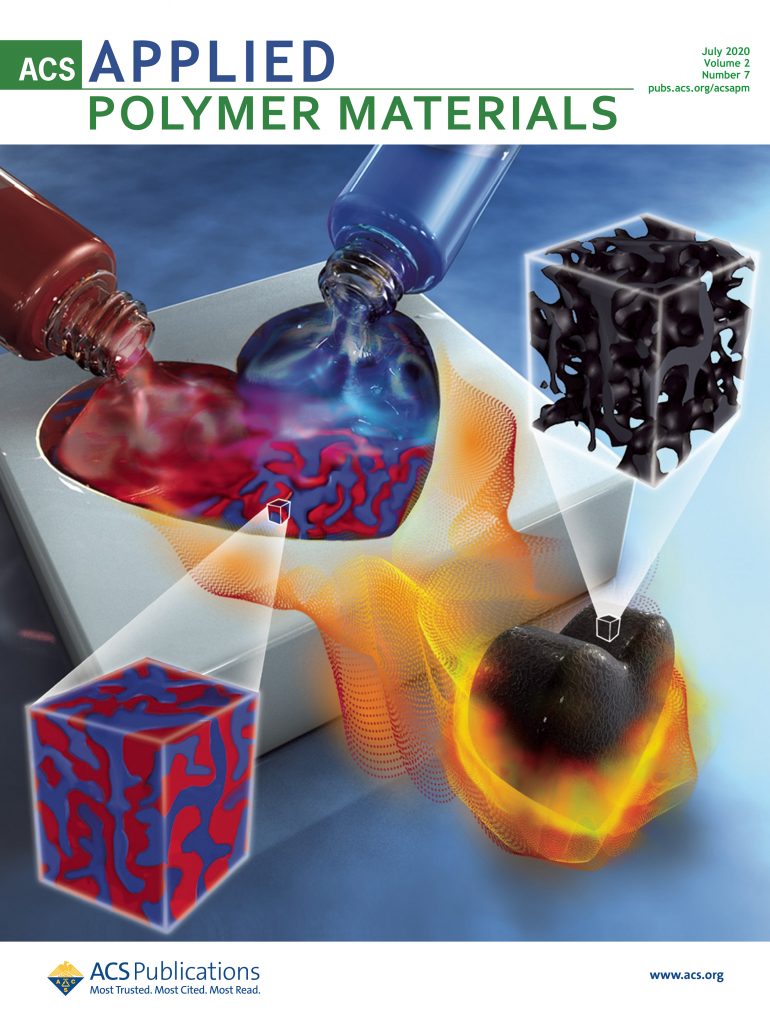Three-Dimensional Covalent Organic Framework Serving as Host and Electrocatalyst in the Cathode of Li–S Battery
IF 4.4
2区 化学
Q2 MATERIALS SCIENCE, MULTIDISCIPLINARY
引用次数: 0
Abstract
Lithium–sulfur batteries (LSBs), as very promising lithium-ion batteries, have received widespread attention from researchers. However, the low conductivity of sulfur in lithium sulfur batteries and the significant volume expansion during charging and discharging seriously affect the high rate performance of the battery, hindering its practical application. In this study, we designed bifunctional 3D covalent organic frameworks (COFs) with interconnected nanostructures and significant catalytic activity by connecting flexible cycloocta thiophene blocks with porphyrin units. 3D COFs act as catalytic nanotraps in the cathode of LSBs, providing confinement and chemical adsorption of lithium polysulfides, thereby improving the redox kinetics of sulfur. The acceleration of Li2S nucleation by Ni-porphyrin active centers, as confirmed through in situ X-ray diffraction and Raman spectroscopy, enhances polysulfide conversion kinetics, further improving battery performance. The constructed battery that incorporates the 3D COF exhibits a minor fading trend of only 0.05% per cycle over 500 cycles at 1 C, outperforming commercial carbon nanotubes. Additionally, under lean electrolyte conditions and high sulfur loading, the 3D COF shows promise as a practical solution for high-energy-density LSBs, achieving an actual area capacity of 7.0 mAh cm–2 at 0.2 C. This research sets a solid foundation for the tailored design of COFs-based bifunctional catalytic nanotraps that can serve dual roles as both host materials and electrocatalysts in Li–S batteries.在锂-S 电池阴极中充当宿主和电催化剂的三维共价有机框架
锂硫电池(LSB)作为极具发展前景的锂离子电池,受到了研究人员的广泛关注。然而,锂硫电池中硫的电导率较低,且在充放电过程中体积膨胀明显,严重影响了电池的高倍率性能,阻碍了其实际应用。在这项研究中,我们通过将柔性环辛基噻吩嵌段与卟啉单元连接起来,设计出了具有互连纳米结构和显著催化活性的双功能三维共价有机框架(COFs)。三维 COF 在 LSB 正极中起到催化纳米陷阱的作用,为多硫化锂提供封闭和化学吸附,从而改善硫的氧化还原动力学。原位 X 射线衍射和拉曼光谱证实,镍卟啉活性中心对 Li2S 成核的加速作用增强了多硫化物的转化动力学,从而进一步提高了电池性能。采用三维 COF 构建的电池在 1 摄氏度条件下循环 500 次,每次循环的衰减率仅为 0.05%,表现优于商用碳纳米管。此外,在贫电解质条件和高硫负荷下,三维 COF 显示出作为高能量密度 LSB 的实用解决方案的前景,在 0.2 C 时实现了 7.0 mAh cm-2 的实际面积容量。这项研究为基于 COF 的双功能催化纳米捕获器的定制设计奠定了坚实的基础,这种捕获器可以在锂-S 电池中同时扮演宿主材料和电催化剂的双重角色。
本文章由计算机程序翻译,如有差异,请以英文原文为准。
求助全文
约1分钟内获得全文
求助全文
来源期刊

ACS Applied Polymer Materials
Multiple-
CiteScore
7.20
自引率
6.00%
发文量
810
期刊介绍:
ACS Applied Polymer Materials is an interdisciplinary journal publishing original research covering all aspects of engineering, chemistry, physics, and biology relevant to applications of polymers.
The journal is devoted to reports of new and original experimental and theoretical research of an applied nature that integrates fundamental knowledge in the areas of materials, engineering, physics, bioscience, polymer science and chemistry into important polymer applications. The journal is specifically interested in work that addresses relationships among structure, processing, morphology, chemistry, properties, and function as well as work that provide insights into mechanisms critical to the performance of the polymer for applications.
 求助内容:
求助内容: 应助结果提醒方式:
应助结果提醒方式:


